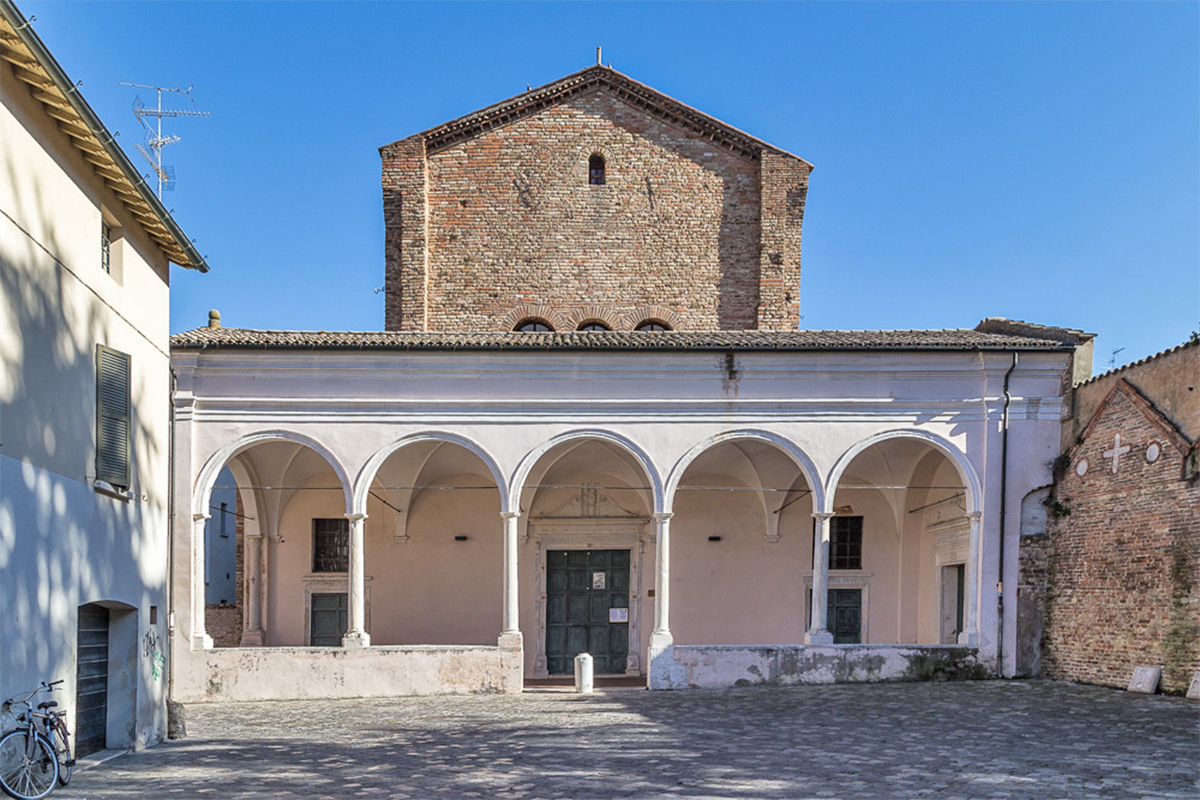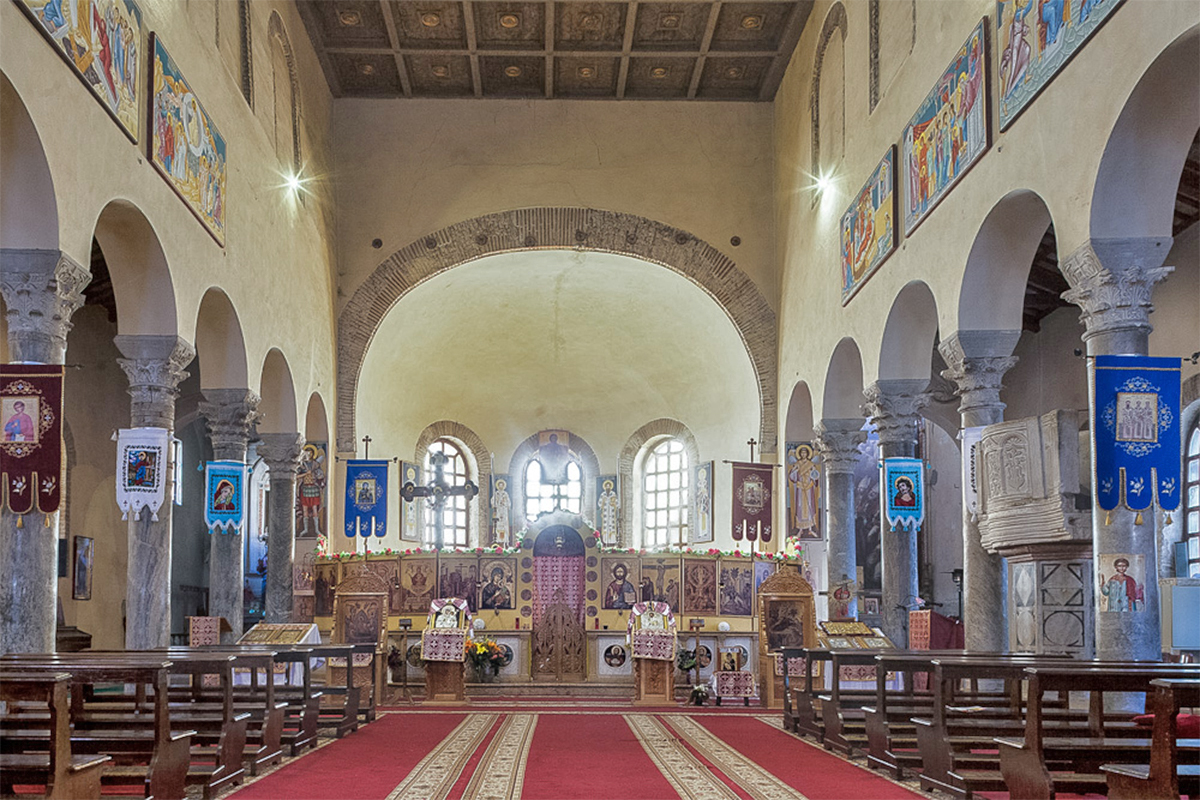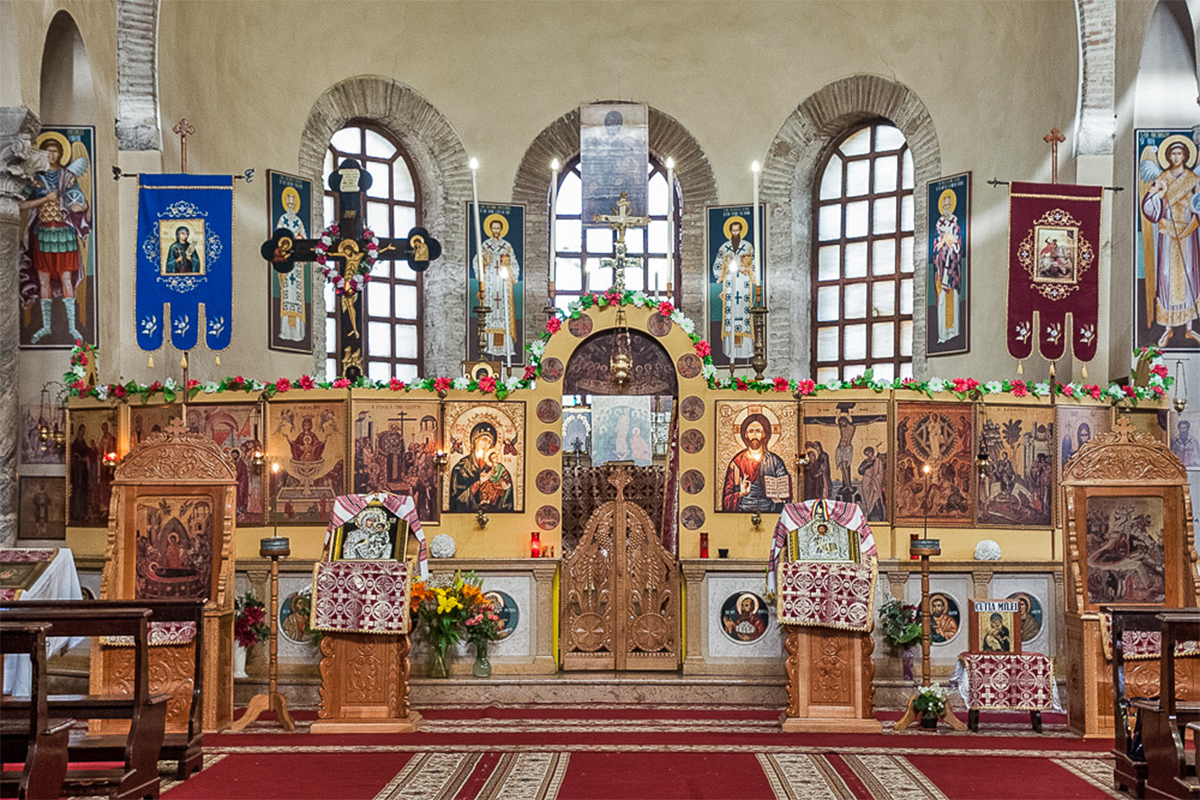Overlooking a beautiful piazza in the historical centre of Ravenna, the BASILICA SPIRITO SANTO is one of the most ancient buildings of the city.
Built in the first years of Theodoric’s reign and intended to be an Arian cathedral, at the beginning of the 6th century AD the church was consecrated by the title of Hagia Anastasis (Saint Resurrection) proving to be one of the most important places of worship of the time, along with the nearby Arian Baptistery.
After the conquest of Ravenna by the Byzantines, under Bishop Agnello the church was converted to the Catholic religion around the half of the 6th century. The church was dedicated to San Teodoro, Greek soldier and martyr from Amasea nel Ponto.
According to a 15th-century popular belief, this is the place where the bishops were miraculously chosen by the holy spirit – the Holy Spirit in the form of a dove came down upon the head of the man chosen as successor to Bishop Apollinaris. The miracle occurred eleven times, reflected in the name of the basilica.
The building, along with the nearby convent, also belonged to Theatine clerics from 1607 to 1797, when they were sent away.
Architecture and decoration
Despite the fact that the facade is partly hidden behind an elegant 26th-century portico, and that the inside of the church underwent several changes, the aspect of today’s church is not very different from the original one.
The former structure should have appeard higher than today’s one. During the 16th century, the floor was raised by about 2 metres to counteract the phenomenon of subsidence.
The basilica is divided into a nave and two side aisles, separated by fourteen columns topped by capitals and pulvinos. It also features an apse, polygonal on the exterior, and arched windows.
The ancient mosaics originally decorating the apse have been completely destroyed.
Severely damaged during World War II, the church was renovated many times during the 20th century. Today, it is entrusted by a community of Orthodox monks.










